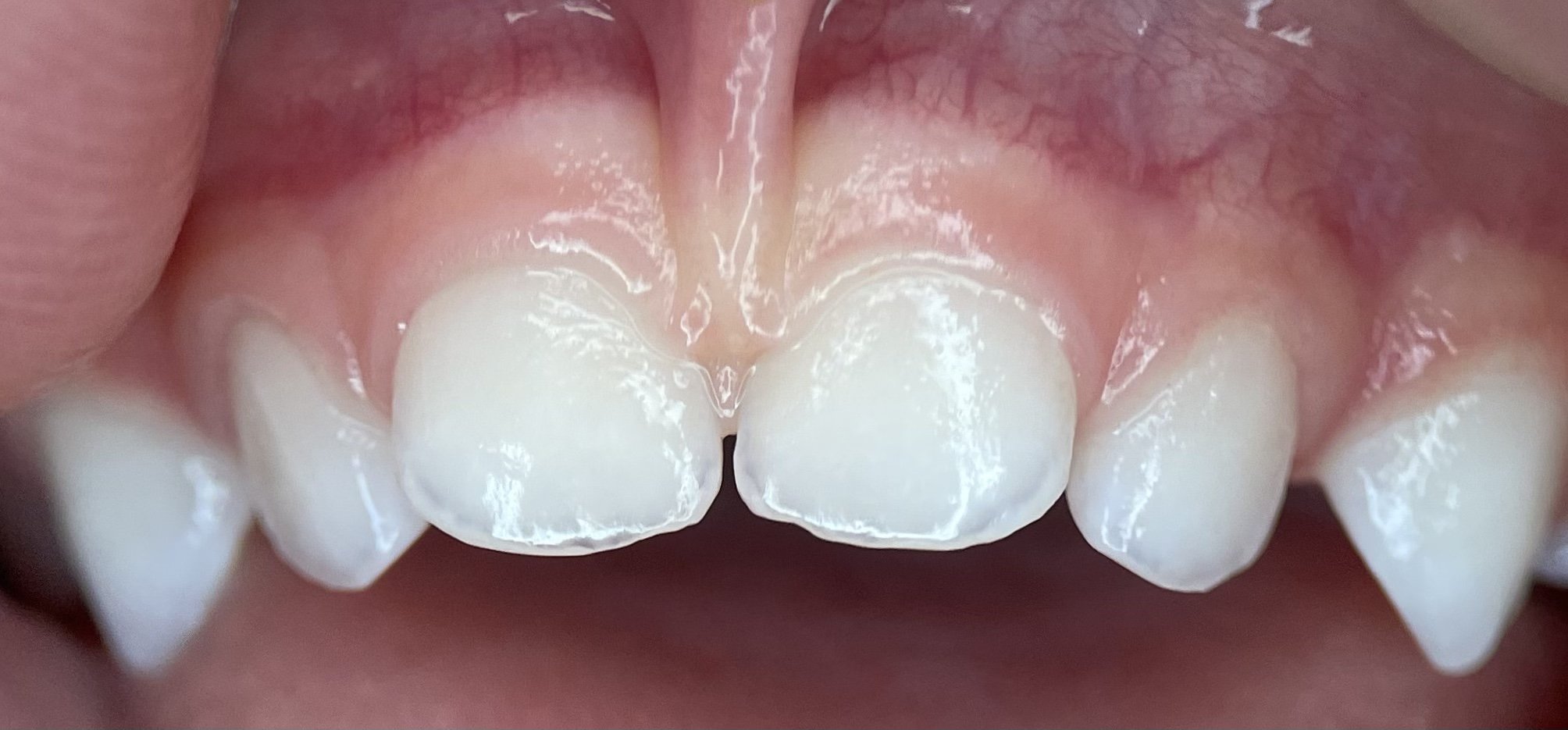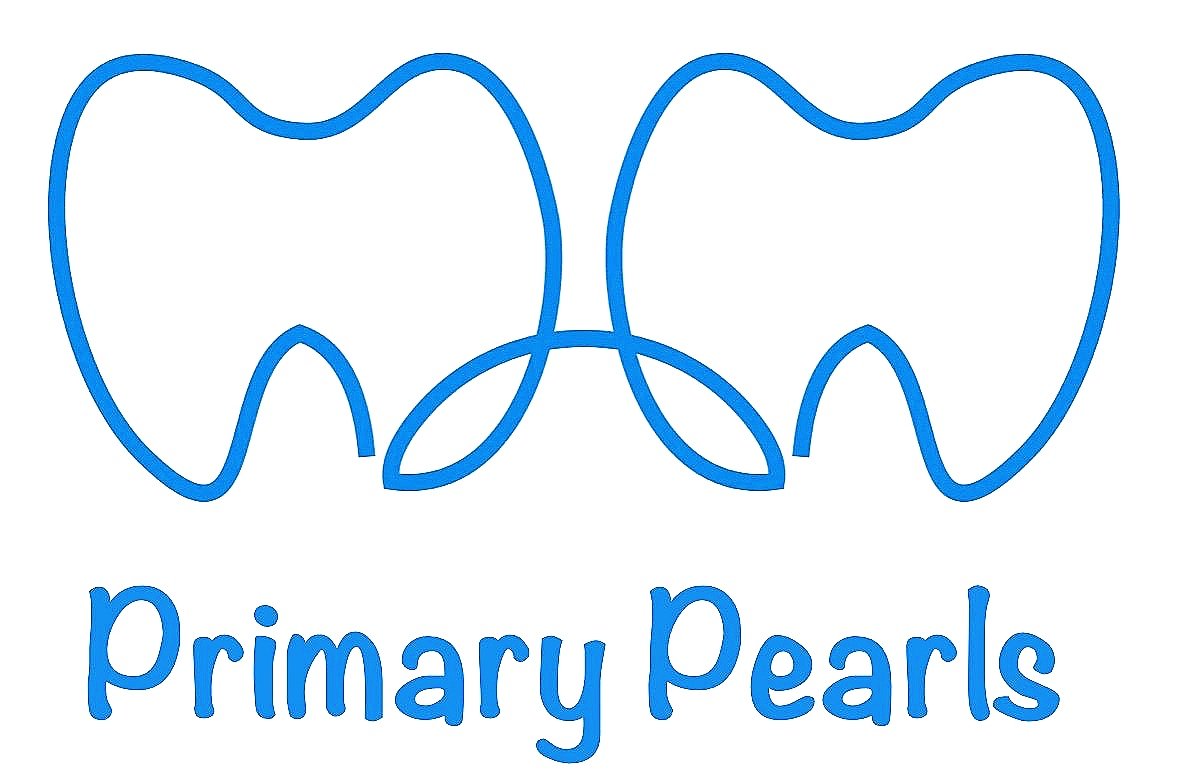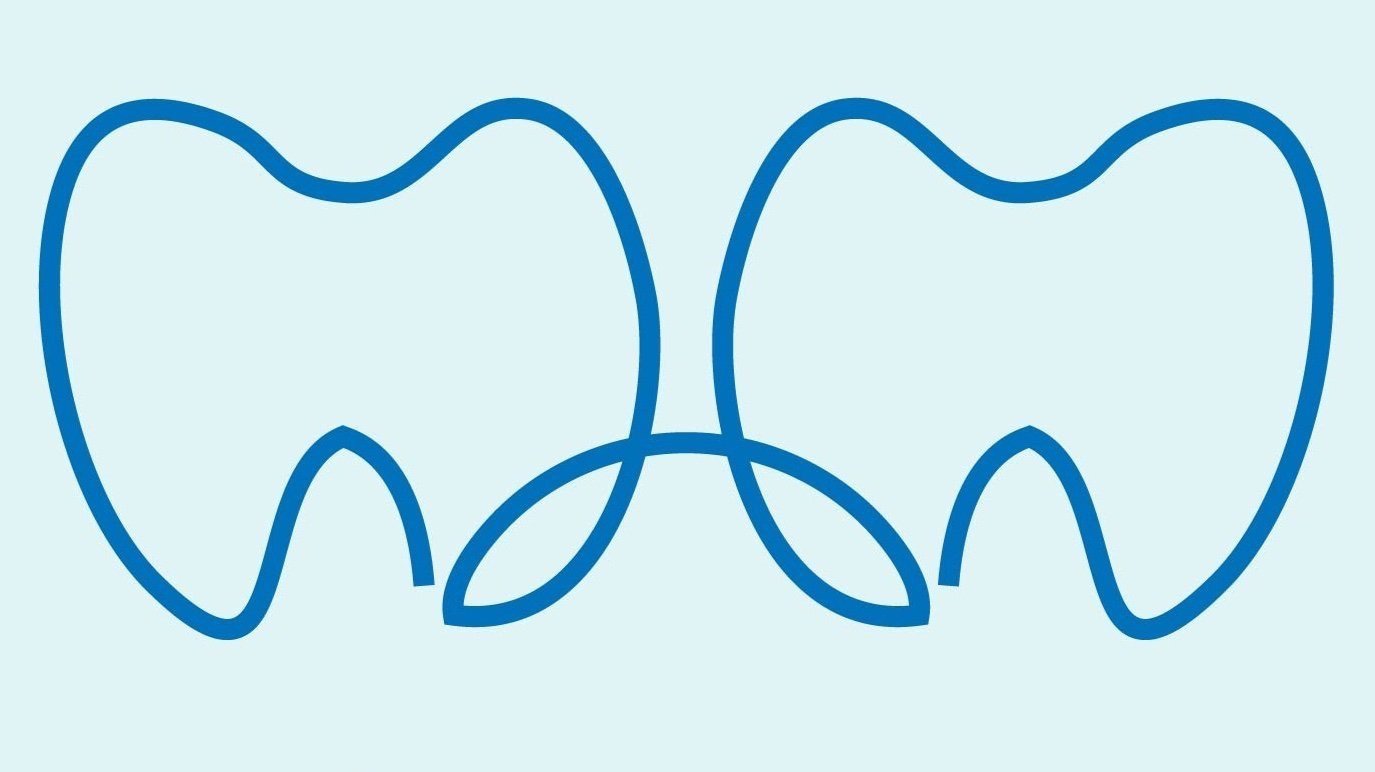
Baby Tooth Basics
When do the teeth grow in? How many are there?
According to the American Academy of Pediatric Dentistry, baby teeth usually start to erupt in children between the ages of 6 months and 12 months. The eruption sequence can vary, but generally follows a pattern:
Lower Central Incisors: The bottom front teeth (lower central incisors) are usually the first to appear, around 5-8 months of age.
Upper Central Incisors: The top front teeth (upper central incisors) are next, erupting at approximately 6-10 months.
Lower Lateral Incisors: The teeth next to the lower central incisors (lower lateral incisors) tend to come in at about 7-10 months.
Upper Lateral Incisors: The teeth next to the upper central incisors (upper lateral incisors) typically emerge around 8-12 months.
First Molars: The first set of molars, both upper and lower, generally erupt between 11-18 months.
Canines (Cuspids): The canines, located next to the lateral incisors, typically appear around 16-20 months.
Second Molars: The second set of molars, both upper and lower, are usually the last to come in, typically between 20-30 months.
It's important to note that these are approximate timelines, and there can be variations among children.
There are 20 total teeth if your child has a normal number of teeth.
WHAT IS THE PURPOSE OF BABY TEETH?
The baby teeth are very important and serve many functions.
Chewing: Baby teeth are essential for biting and chewing food, allowing proper digestion and nutrition.
Speech Development: They contribute to the development of clear speech and pronunciation.
Space Holders: Baby teeth maintain space for the eventual eruption of permanent teeth. Premature loss of baby teeth can lead to alignment issues.
Esthetics: They are important for smiling and interactions.
Because of this, it’s very important to take care of the baby teeth.
Do you have to take care of the baby teeth? Don’t they just fall out?
It is true that the baby tooth do fall out (exfoliate), but some of the teeth do not exfoliate until 10-12 years of age. Because of this, sometimes treating the baby teeth is indicated to prevent pain, infection, and damage to the permanent teeth.
The timeline for when baby teeth fall out can vary from child to child, but the general sequence and age range for tooth loss are as follows:
Central Incisors (Bottom Front Teeth): Typically, the lower central incisors are the first baby teeth to be lost, usually between the ages of 6 and 7.
Central Incisors (Top Front Teeth): The upper central incisors tend to follow shortly after, often between the ages of 6 and 8.
Lateral Incisors: The lateral incisors (the teeth next to the central incisors) typically fall out around the same time as the central incisors.
First Molars: The first set of molars, both upper and lower, are usually lost between the ages of 9 and 11.
Canines (Cuspids): The canines, which are located next to the lateral incisors, often fall out between the ages of 9-11 (bottom) and 11-12 (top).
Second Molars: The second set of molars, both upper and lower, are usually the last baby teeth to be lost, typically between the ages of 10 and 12.
It's important to note that these ages are approximate, and there can be significant variations among children. Tooth loss can begin earlier or later, and the sequence may vary as well.
What’s the difference between baby teeth and adult teeth?
Baby teeth (primary teeth) and adult teeth (permanent teeth) have several key differences:
Number: As discussed before, most children have a total of 20 baby teeth—10 in the upper arch and 10 in the lower arch. Adults usually have 32 permanent teeth, including 8 incisors, 4 canines, 8 premolars, and 12 molars.
Purpose and Timing: Baby teeth serve as placeholders for adult teeth, aiding in speech development and proper chewing. They start to erupt around 6 months of age. Adult teeth are designed to last a lifetime and perform the primary functions of chewing, speaking, and maintaining facial structure. They start to replace baby teeth around age 6 and continue to erupt throughout childhood and adolescence.
Size and Shape: Baby teeth are smaller in size and have thinner enamel than adult teeth. They have a shorter lifespan, are less durable, and cavities can progress quickly. Permanent teeth are larger, stronger, and designed to last for many decades.
Color: Baby teeth are usually whiter in appearance. The color of permanent teeth can vary but often appears slightly yellowish or ivory in color.
Roots: Baby teeth have shorter roots compared to adult teeth, which allows them to be more easily pushed out as permanent teeth erupt. Adult teeth: Permanent teeth have longer and more stable roots that anchor them firmly in the jawbone.
Eruption Sequence: Baby teeth typically emerge in a specific order, starting with the lower central incisors and followed by other teeth in a more predictable pattern. Permanent teeth also follow a sequence, but the timing and order of eruption can vary among individuals.
Longevity: Baby teeth are temporary and are gradually lost as permanent teeth replace them. Permanent teeth are designed to last a lifetime with proper care, diet, and maintenance.
Maintaining good oral hygiene practices and regular dental check-ups are essential for both sets of teeth to support overall oral health.
Have a suggestion or question?

